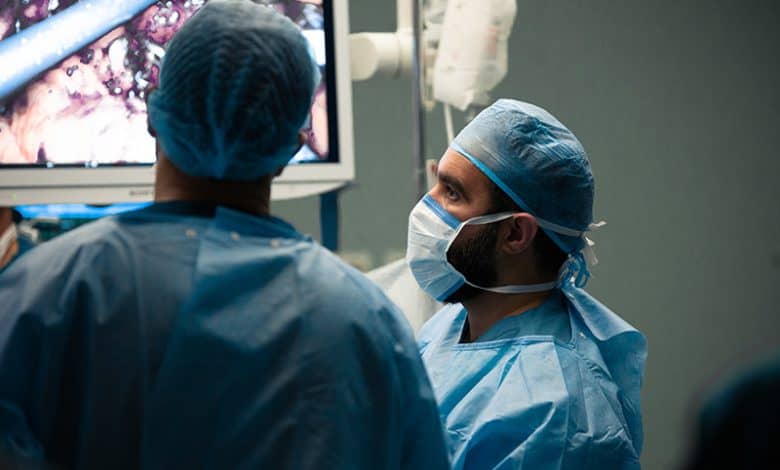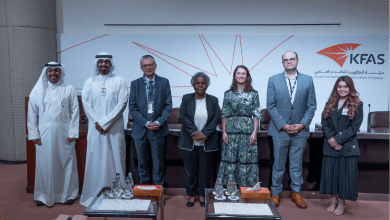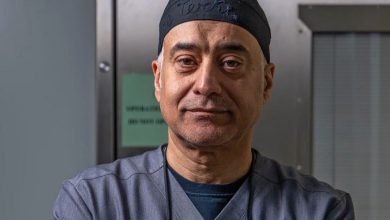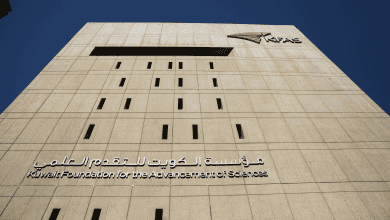A Surgeon and his Quest to Curb Obesity in Kuwait
A surgeon, a researcher and an educator, Mohammad Jamal is pioneering the way for bariatric surgery in Kuwait.

With humming medical machines and mumbling human voices in the background; Mohammad Jamal surely seemed busy when I first called him for our interview.
An associate professor of surgery at Kuwait University and acting chairman of the department of transplantation, Jamal leads a busy life. He is one of the country’s leading researchers in the field of fatty liver and bariatric surgery - a surgical procedure that helps in weight loss by modifying the digestive system.
Jamal completed his medical degree at the University of Aberdeen in Scotland and surgical training at McGill University in Canada. He was fascinated by the surgeries of the upper gastro-intestinal (GI) tract, as the anatomy of the region itself is quite variable and unique within each individual.
He got a fellowship in the field of hepatopancreatobiliary surgery – the surgery of liver, pancreas, and gallbladder – and liver transplantation. During this fellowship, he noticed emerging cases of a relatively newly recognized disease called fatty liver; a disease in which excessive fats are accumulated in the liver cells, leading to inflammation of the liver and liver failure.
“It alerted me about the growing challenges of obesity for mankind,” he said. At the end of this fellowship, Jamal decided to pursue bariatric surgery, a field that offers a solution to obesity.
Obesity is a complex medical problem that causes the body to accumulate excessive fat. More than 650 million people in the world are obese, according to the World Health Organization. However, obesity is not only a problem of being overweight, overeating, or a lack of exercise. It’s a far more complex disease that invites a lot
of health issues.
Over the last thousand years, humans have evolved to be very efficient in storing fat, according to Jamal. Our genetic makeup is very resistant to starvation and favors fat storage. So, evolutionarily, the most efficient people who could conserve fats were the ones who survived better.
“But it’s what makes people obese in modern times,” Jamal said.
Between 1975 and 2016, the obesity rate across the world almost tripled and Kuwait ranks among the top ten countries, with almost 38 percent of its population obese.
When diet control and exercise become practically ineffective, bariatric surgery helps treat the condition. It’s regarded as one of the most effective weight loss strategies that helps alleviate risks of heart disease, stroke, high blood pressure, cancer, and type II diabetes, said Jamal. The surgery restricts food intake and changes the metabolism favorably. For the first time in 1967, two prominent surgeons, Edward Mason and Chikashi Ito, successfully performed this surgery, which resulted in significant weight reduction among their patients. But the technique didn’t gain popularity until the early 1990s.
Though the surgery was a well-known strategy of weight reduction, how exactly the body gets rid of such a huge mass of fat remained a mystery for a long time.
In 2016, with the support of the Kuwait Foundation for the Advancement of Sciences (KFAS), Jamal and his team, which included 12 other colleagues representing various departments within Kuwait University and Dasman Diabetes Institute, led a unique research study to figure out how the bodily pathways eliminate excess fat following
bariatric surgery.
The researchers used several rats and divided them into two different groups, feeding one group a regular rat chow diet, while another was fed high calorie foods including cheese, cupcakes, chocolate spread and peanut butter, etc.
As the weeks went by, the rats eating high calorie foods became obese. At the end of 21 weeks, the obese rats underwent surgery. The sleeve gastrectomy surgery removed a large portion of their stomach, leaving a long pipe-like pouch for the passage of food.
At the end of 25 weeks, the team collected samples of blood, muscle tissue and fatty tissue from the rats. They wanted to analyze the change in composition of proteins and other biomolecules as a result of the surgery. The analysis revealed the dominance of special proteins called irisin and meteorin-like. Irisin protein helps to improve muscle activity, it burns fat and prevents the formation of fat cells. Meteorin-like protein facilitates the conversion of white fat, often considered the ‘bad’ fat, into a usable brown fat - the ‘good’ fat.
Jamal and his team also carried
out the same procedure for people undergoing bariatric surgery and the results were quite similar. “Following surgery, weight loss was observed not because people [or rats] eat less, but because the essential patterns of metabolism were changed,” Jamal said. They discovered increased levels of meteorin-like and irisin hormone following the surgery.
“We don’t know what’s causing the increased level of proteins, but we will keep looking,” he said. With a firm understanding of physiological processes involved in weight loss following surgery, Jamal and his team have bigger ambitions. They believe it can be possible to design therapeutic drugs that can help treat extreme forms of obesity without the need for surgery.
“Mohammad is someone who is
truly hungry for solutions; someone who loves to create knowledge by asking questions, tackling problems and trying
to find answers by mixing expertise
from multiple fields,” said Hamad Ali Yaseen, associate professor of genomic medicine at Kuwait university and a collaborator on the research project.
“He is an all-in-one kind of MD holder.”
Yaseen also praises the efforts
of KFAS for expanding the research
horizon in Kuwait. “It’s excellent
to see the commitment of foundations
like KFAS,” he said. “They provide us
with virtually all the support, ranging
from basic infrastructures and
specialized laboratories, to advanced medical machineries.”
Looking ahead, Jamal is
committed to contribute further to the field of bariatric surgery and liver transplantation. Through rigorous research, he wants to redefine the role
of the liver, hormones, and gut for a
proper understanding of the prominent
health conditions like diabetes
and obesity.
“For me, research is not a luxury,” he said, “It’s an ultimate necessity for the survival and prosperity of humankind.”
Saugat Bolakhe




